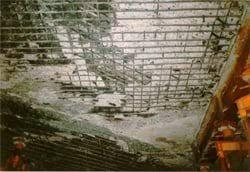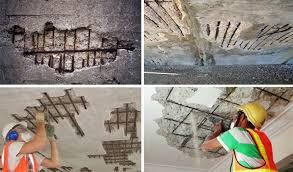




Table of Contents
- Introduction
- What is Concrete Spalling?
- Causes of Spalling
- Effects of Spalling
- Prevention of Spalling
- Repairing Spalled Concrete
- Conclusion
- Faq's
Introduction
Concrete spalling is a prevalent issue that affects the durability and aesthetics of concrete structures. It occurs when the surface of concrete becomes damaged, leading to flaking or peeling. Understanding the causes and effects of spalling, alongside effective prevention and repair strategies, is essential for maintaining the integrity of concrete. This article delves into the nature of concrete spalling, its primary causes, and methods to prevent and repair it.
What is Concrete Spalling?
Concrete spalling refers to the flaking or chipping of the concrete surface caused by various factors, including environmental deterioration or physical stress. This condition typically reveals a weakened underlying structure, making concrete surfaces unsightly and potentially hazardous.
Causes of Spalling
- Moisture Penetration: Water infiltrates the concrete, causing freeze-thaw cycles that expand and contract.
- Chemical Attack: Exposure to deicing salts, acids, or sulfates can deteriorate the concrete.
- Poor Installation: Inadequate curing, low-quality materials, or improper mixing techniques can lead to weak concrete.
- Corrosion of Reinforcement: The rusting of steel reinforcement bars within the concrete expands, causing surface spalling.
 Causes of Spalling,Promat
Causes of Spalling,Promat
Effects of Spalling
- Structural Weakening: Spalling reduces the load-bearing capacity of the concrete structure. Exposed rebar is also susceptible to further corrosion, further compromising strength.
- Safety Hazards: Loose concrete fragments can fall and injure people or damage property. Spalled areas can also create tripping hazards.
- Reduced Service Life: Spalling accelerates the deterioration of the concrete structure, shortening its lifespan and requiring more frequent repairs.
- Increased Maintenance Costs: Addressing spalling requires ongoing repairs, which can be costly, especially if the damage is extensive.
- Aesthetic Degradation: Spalling detracts from the appearance of the concrete structure.
Prevention of Spalling
- Proper Design and Planning: Ensuring correct mix design and adequate drainage can mitigate moisture issues.
- Quality Materials: Use high-quality concrete and reinforcement materials to enhance durability.
- Regular Maintenance: Conduct routine inspections and apply protective sealants to minimize water penetration and chemical exposure.
- Controlled Environment: Where possible, maintain stable temperatures and avoid winter construction that can introduce moisture-related issues.
 Prevention of concrete spalling,Quantity TakeOff
Prevention of concrete spalling,Quantity TakeOff
Repairing Spalled Concrete
- Surface Preparation: Clean the affected area by removing loose material and contaminants.
- Fill and Repair: Use appropriate patching materials designed for concrete repairs.
- Resurface: For extensive spalling, resurfacing might be required to restore appearance and functionality.
- Final Treatment: Seal the surface to protect against future moisture and chemical intrusion.
Conclusion
Concrete spalling is a significant concern for the longevity and safety of concrete structures. Understanding its causes and effects allows for effective prevention and timely repairs. By adhering to best practices in material selection, construction, and maintenance, the risks associated with spalling can be significantly reduced, ensuring durable and aesthetically pleasing concrete surfaces.
explore further
Latest from Contemporary ideas
More from Innovations
Resources
Dwello, for every home buyer, is a way to go from 'I feel' to 'I know', at no extra cost.



